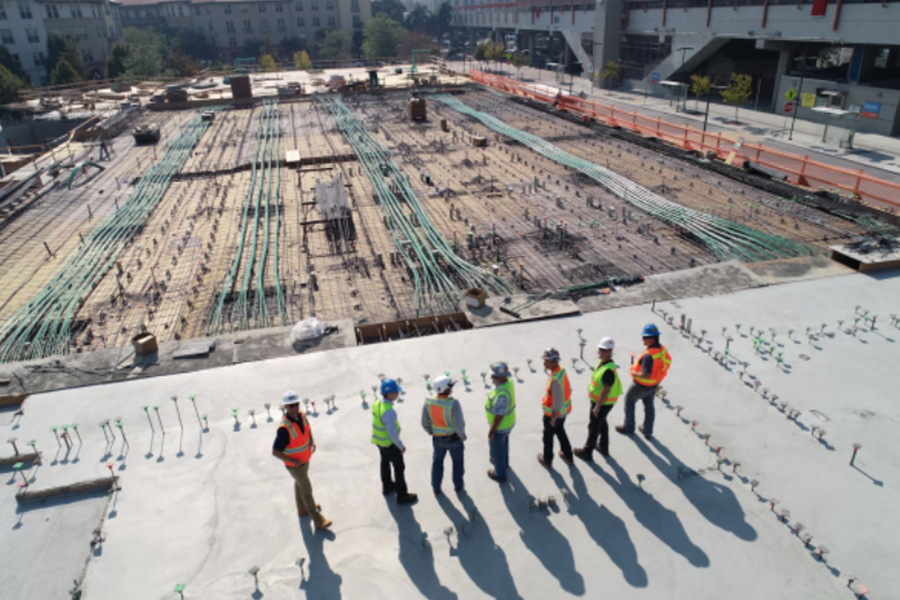
Keeping your job site running smoothly and efficiently is crucial for meeting deadlines and maximizing profits. When working with specialized equipment like bucket trucks and street sweeper trucks, even minor delays can significantly impact overall production. But fear not! Here are some actionable strategies and tips to help you elevate your workflow management and boost production on your next project.
Optimizing Bucket Truck Operations

Pre-Job Planning:
The key to a successful bucket truck operation lies in meticulous planning. Before dispatching the truck, ensure a detailed job plan is in place. This plan should outline the specific tasks, required materials, and estimated time for each location. A well-defined plan minimizes downtime spent searching for information or missing tools.
Maximizing Crew Efficiency:
Assign tasks strategically, considering individual skill sets and maximizing crew collaboration. Having a dedicated ground crew readily available to assist the bucket operator with tool fetching or stabilization ensures minimal time wasted on unnecessary climbing and descending.
Utilizing Technology:
Modern bucket trucks offer advanced features like telescopic booms and improved articulation. Familiarize your crew with all functionalities to optimize reach and minimize repositioning needs. Additionally, consider investing in software solutions that track job progress and optimize route planning, saving valuable time on the job.
Prioritizing Safety:
Safety is paramount. Always conduct thorough pre-operation inspections on the bucket truck, ensuring all equipment is functioning correctly. Enforce the use of proper safety gear and adhere to established safety protocols while operating the boom. Prioritizing safety not only protects your crew but also prevents delays caused by accidents.
Enhancing Sweeper Truck Productivity

Route Planning and Scheduling:
Just like with bucket trucks, optimize your sweeper truck’s schedule by planning efficient routes. Consider factors like traffic congestion, street sweeping restrictions in certain areas, and debris volume to maximize sweeping coverage within a designated time frame.
Matching the Right Sweeper to the Job:
Different sweepers are designed for various applications. For heavy debris removal, a regenerative air sweeper might be ideal, while a mechanical sweeper might be better suited for lighter materials like leaves. Utilizing the appropriate sweeper ensures a thorough clean and avoids unnecessary passes over the same area.
Minimizing Downtime:
Regular preventative maintenance is crucial for sweeper trucks. Conduct routine inspections and address minor issues promptly to prevent breakdowns that can significantly disrupt production.
Utilizing Onboard Features:
Many modern sweeper trucks offer features like automated water sprinkling systems to suppress dust during operation and optimize cleaning effectiveness. Additionally, onboard cameras can offer the driver better visibility of blind spots and improve overall efficiency.
Additional Strategies for Overall Jobsite Production Boost

Effective Communication:
Maintain clear and consistent communication between project managers, crew members, and equipment operators. This ensures everyone is on the same page, aware of potential roadblocks, and can adapt to unforeseen circumstances collaboratively.
Streamlining Material Delivery:
Coordinate material deliveries to coincide with project phases, minimizing clutter and wasted time searching for necessary supplies.
Investing in Quality Equipment:
Reliable and well-maintained equipment ensures fewer breakdowns and delays. Regularly invest in preventive maintenance and consider upgrading aging equipment to benefit from technological advancements.
Motivation and Recognition
Positive Work Environment:
Fostering a positive and collaborative work environment goes a long way in boosting morale and productivity. Recognize and appreciate your crew’s hard work and celebrate milestones achieved. Offer opportunities for professional development to show your investment in your employees’ growth.
Incentive Programs:
Consider implementing incentive programs to motivate your crew and reward them for surpassing goals or achieving milestones on time. These programs can be financial or non-financial, but ensure they are clear, achievable, and rewarding.
Teamwork and Collaboration:
Encourage teamwork and collaboration among crew members. By working together effectively, they can overcome challenges, find solutions more readily, and identify areas for improvement. Foster a sense of ownership and accountability within the team to boost engagement and productivity.
By implementing these proven strategies and fostering a culture of efficiency, you can significantly boost production on your job site. Remember, a well-planned approach, optimized equipment utilization, and a motivated workforce are key ingredients for success. So, put these tips into practice and watch your project timelines shrink while your productivity soars!
Maximizing productivity on a job site hinges on having reliable, robust vehicles that can handle the demands of your work. For those in Texas seeking such equipment, Big Truck & Equipment Sales is an excellent resource. They offer a comprehensive range of high-quality vehicles, including used bucket trucks, vacuum trucks, digger derrick trucks, and more. Contact them today for more details.

